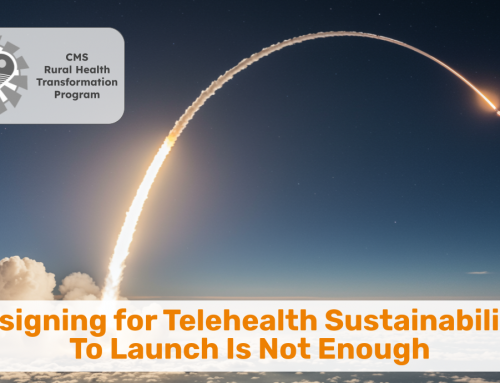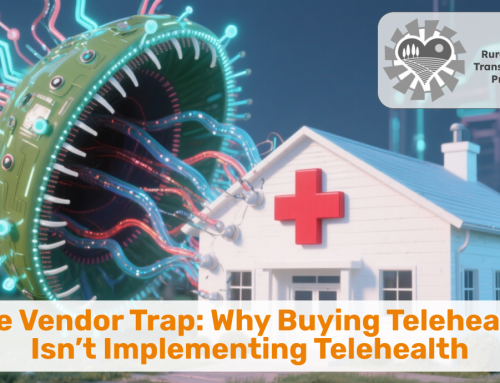These days, there are surely some interesting dynamics at play. And no, I’m not talking about the post-election dynamics or the holidays during a full-blown health crisis. I am talking about the forces at play at this very moment, preparing for the inevitable time later in 2021 when politics and everyday life are for the most part stable again. The Telehealth Landscape is about to change – dramatically.
Pandora’s Box is Open Wide
Covid-19 certainly demonstrated the feasibility of virtual care delivery and it is understood by most in healthcare that a wide-spread use of telehealth is here to stay. Still, many voices in the “traditional” care delivery system still wish that things could go back to “normal” and continue to believe that telehealth “didn’t really work”. But when you peel back the layers behind such statements, what I often found is a self-fulfilling prophecy: because they did not think it was going to work, they found evidence when it did not work.
For this very reason for over 10 years I’ve been implementing telemedicine services in health systems starting with the champions, the early adopters. Those who believed in telehealth as a viable clinical tool – not a replacement for in-person visits, but another tool in their tool chest to deliver extraordinary care.
As I’ve said in last week’s article: the comparison should be between “no access to care” and “access to virtual care”. But statistics on “no access to care” are hard to come by, because you cannot count what did not happen. So it’s hard to measure the true value of having access. Though we did see that during the height of Covid-19 infections when patients would rather have no visit.
But let me today focus on some other dynamics at play, that in my opinion are presenting a big threat to healthcare as we know it. I’m talking about the increasing, as I call it, “shadow healthcare system”, that is now forming and rapidly expanding.
Here are just a few select clues that the landscape as a whole is about to change dramatically:
Amazon.care started out in 2019 with an isolated pilot in Seattle as an experimental, alternative tool to lower the cost of care for some of Amazon’s workers. As expected, just after the launch a year ago, Amazon.care now opened its membership to all Amazon employees and dependents within the state of Washington. It’s not a big step from there to offering the service to all residents in Washington state.
Walmart Health offers in-store access to care, starting as low as $30 per visit. It is thereby in direct competition with similar services at CVS and Walgreens who are all ultimately in competition with the local health system that is relying on “standard visits”. While Walmart Health at the moment is not offering virtual services, it is only a small leap to that next level of care delivery.



The Pressure Is On
What I’m concerned about is that — backed by billions of dollars in venture capital funding (which mostly translates into well-backed marketing campaigns) — these new solutions will woo especially those modern healthcare consumers that typically create the incumbent healthcare providers’ profit margin or break-even margin. When this income source is diverted to other entities, the whole fragile business model of many rural health systems or safety net hospitals can crumble.
In addition, those hi-and-bye healthcare providers do not ensure (or even strive for) a true long-term relationship. Plus, due to the lack of integrated medical information, there is also no to very little information passed on the patient’s primary care provider about that telehealth visit, leading to a fragmentation of care and suboptimal care decision making, as it is based on limited data. The US healthcare quality is already bad enough as it is (compared to other nations) and this fragmentation will exacerbate that.
A Solution is available
For me the solution, though, is not regulation. Rather, my solution is to sound a shrilling wake up call to all healthcare leaders to become fully present to what is going on in startup up co-working spaces all over the world.
What’s needed is bold and assertive leadership to set forth a Connected Health or Virtual Care strategy and to leverage the trust bestowed upon most providers by their imminent community to offer a superb, continuous, integrated care experience – at a distance or in person.
With strong leadership, an expert team (e.g., complemented through external advisors, such as Ingenium) and sufficient resources, healthcare organizations can turn things around within weeks in shorter time frames than it takes a startup to raise another round of funds.
Here’s the quick recipe:
- The Leadership of Connected Health starts with the CEO
- Establish a cross-disciplinary, physician-led executive team
- Set forth the vision and mission for why Connected Health is important
- Assess and evaluate the current telehealth services and identify those that are in competition with the telemed-only services
- Improve, grow, expand and add based on what the patients want and need
Does your organization have a Telehealth Strategy? What’s in it?








To receive articles like these in your Inbox every week, you can subscribe to Christian’s Telehealth Tuesday Newsletter.
Christian Milaster and his team optimize Telehealth Services for health systems and physician practices. Christian is the Founder and President of Ingenium Digital Health Advisors where he and his expert consortium partner with healthcare leaders to enable the delivery of extraordinary care.
Contact Christian by phone or text at 657-464-3648, via email, or video chat.







Leave A Comment